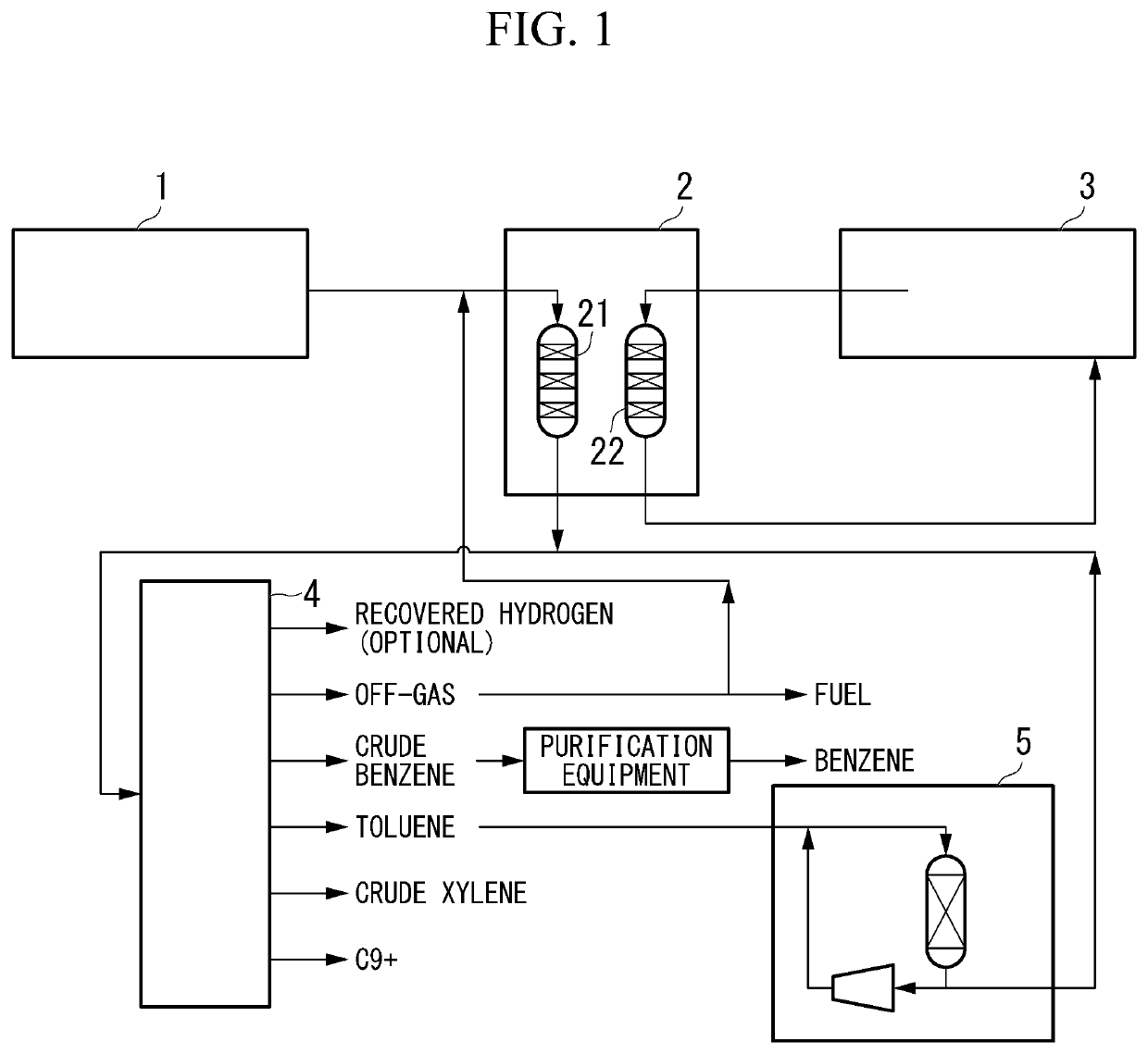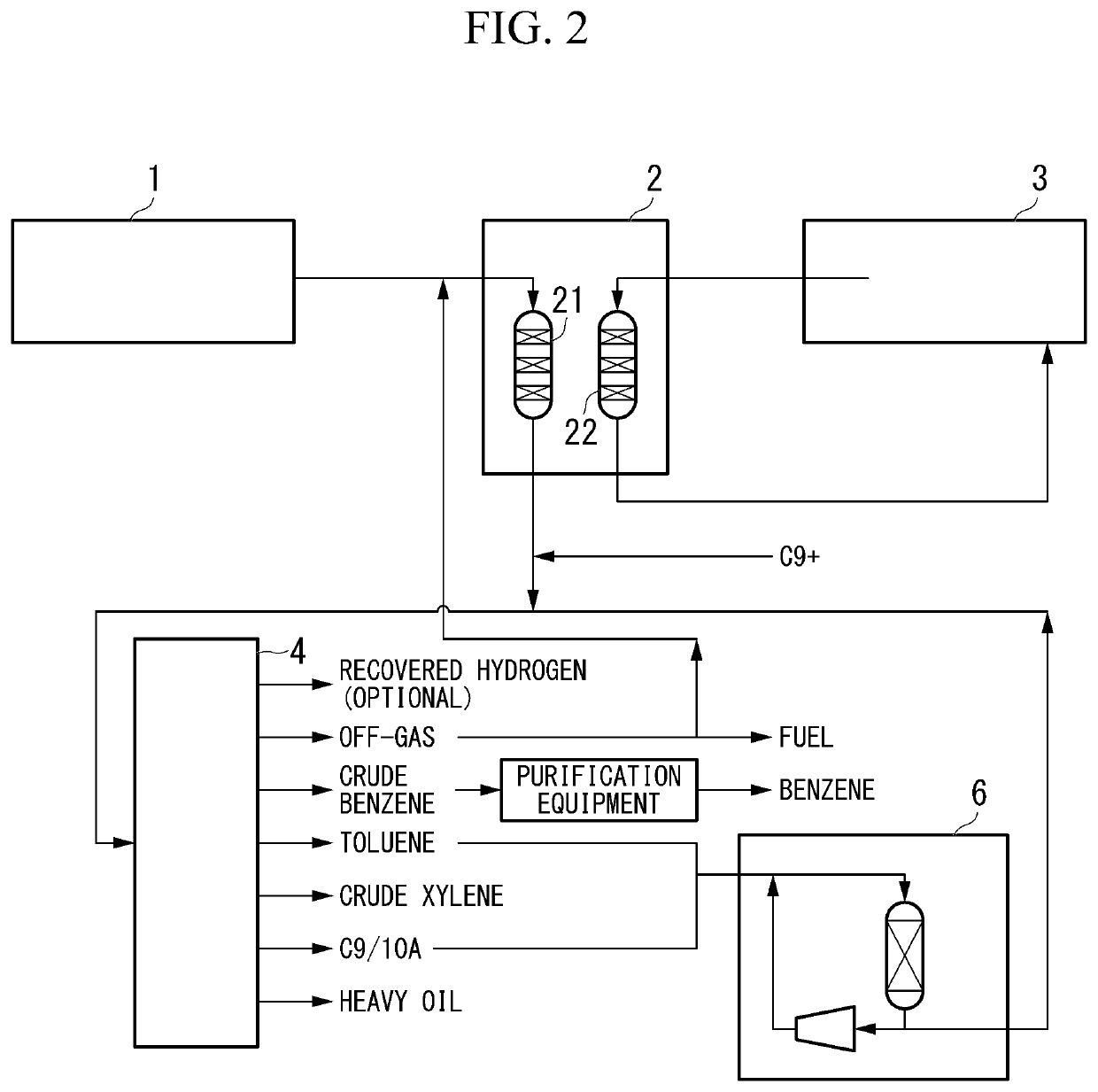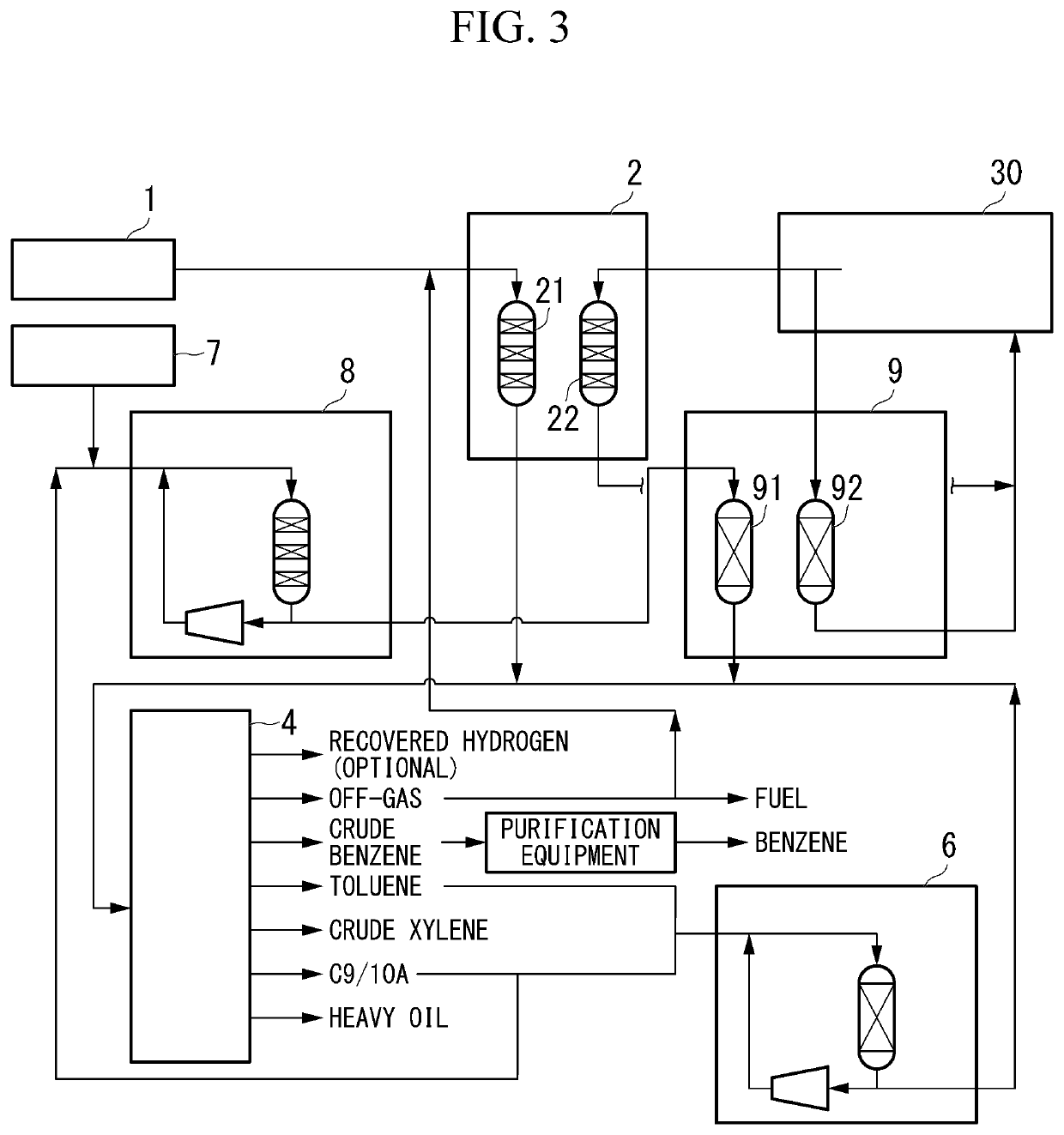Method for producing xylene
a technology of xylene and xylene, which is applied in the field of xylene production, can solve the problems of low profitability, difficult to produce gasoline with high octane value and aromatic hydrocarbon in high yield, and limited use of light hydrocarbons in petrochemical raw materials, etc., and achieves high yield.
- Summary
- Abstract
- Description
- Claims
- Application Information
AI Technical Summary
Benefits of technology
Problems solved by technology
Method used
Image
Examples
first embodiment
[0016]As shown in FIG. 1, in the first embodiment of the method for producing xylene of the present invention (hereinafter, may be simply referred to as the “first embodiment”), a raw material 1 containing a light hydrocarbon having 2 to 7 carbon atoms as the main component is brought into contact with a crystalline aluminosilicate-containing catalyst (Z) (hereinafter, may be simply referred to as a “catalyst (Z)”) in a conversion reaction device 2, and then a product containing a monocyclic aromatic hydrocarbon having 6 to 8 carbon atoms is produced. Subsequently, the product is subjected to a disproportionation reaction in the disproportionation reaction device 5 to produce xylene.
[0017]Specifically, it is preferable that the first embodiment mainly has the following five steps (z1-1) to (z1-5). In addition to the following five steps (z1-1) to (z1-5), the method for producing a monocyclic aromatic hydrocarbon of the present invention may have a step (z1-6).
[0018](z1-1) Conversion...
second embodiment
[0084]As shown in FIG. 2, in the second embodiment of the method for producing xylene of the present invention (hereinafter, may be simply referred to as the “second embodiment”), a raw material 1 containing a light hydrocarbon having 2 to 7 carbon atoms as the main component is brought into contact with a catalyst (Z) in a conversion reaction device 2, and then a product containing a monocyclic aromatic hydrocarbon having 6 to 8 carbon atoms is produced. Subsequently, the product is subjected to a transalkylation reaction in the transalkylation reaction device 6 to, thereby xylene being produced.
[0085]Specifically, it is preferable that the second embodiment mainly has the following five steps (z2-1) to (z2-5). In addition to the following five steps (z2-1) to (z2-5), the method for producing a monocyclic aromatic hydrocarbon of the present invention may have a step (z2-6).
[0086](z2-1) Conversion reaction step
[0087](z2-2) Gas-liquid separation step of reaction bed effluent
[0088](z2...
third embodiment
[0107]As shown in FIG. 3, in the third embodiment of the method for producing xylene of the present invention (hereinafter, may be simply referred to as the “third embodiment”), a raw material 1 containing a light hydrocarbon having 2 to 7 carbon atoms as the main component is brought into contact with a catalyst (Z) in a conversion reaction device 2, and then a product containing a monocyclic aromatic hydrocarbon having 6 to 8 carbon atoms is produced. Further, a raw material derived from a raw material oil 7 having a 10% by volume distilling temperature of 140° C. or higher and a 90% by volume distilling temperature of 380° C. or lower is brought into contact with a crystalline aluminosilicate-containing catalyst (F) (hereinafter, may be simply referred to as a “catalyst (F)” to produce the product containing a monocyclic aromatic hydrocarbon having 6 to 8 carbon atoms. Subsequently, the product is subjected to a transalkylation reaction in the transalkylation reaction device 6 to...
PUM
| Property | Measurement | Unit |
|---|---|---|
| distilling temperature | aaaaa | aaaaa |
| distilling temperature | aaaaa | aaaaa |
| boiling point | aaaaa | aaaaa |
Abstract
Description
Claims
Application Information
 Login to View More
Login to View More - R&D
- Intellectual Property
- Life Sciences
- Materials
- Tech Scout
- Unparalleled Data Quality
- Higher Quality Content
- 60% Fewer Hallucinations
Browse by: Latest US Patents, China's latest patents, Technical Efficacy Thesaurus, Application Domain, Technology Topic, Popular Technical Reports.
© 2025 PatSnap. All rights reserved.Legal|Privacy policy|Modern Slavery Act Transparency Statement|Sitemap|About US| Contact US: help@patsnap.com



